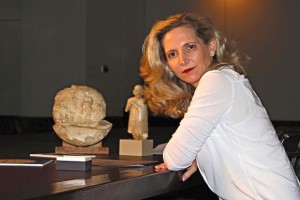The Times: TV review: The Ascent of Woman
The Ascent of Woman
BBC Two
★★★★☆
Even the most overpaid enemy of wimmin’s herstory will earn his money if he manages to ridicule Dr Amanda Foreman’s The Ascent of Woman. Here, last night, was Foreman on Assyrian law in the 12th century BC. “In my opinion,” she said, “this is a harsh society where the law has become a charter for male oppression.” She had just told us that among the 112 laws recorded on a surviving tablet were death penalties for abortion and adultery, and permission for the wife of a rapist herself to be raped in punishment.
I loved “in my opinion”, not because it was a rhetorical flourish but because other evidence indeed suggested Assyrian women enjoyed rather more freedom than the tablet’s engravers would have liked. Although the first part of this new history of women strove to counter existing narratives of incessant female oppression or, perhaps worse, female irrelevance, it was never strident itself. “It is important not to prejudge the veil”, Foreman even said, having traced the headscarf, the wimple and the nun’s habit back to the Assyrians too (2,000 years before Islam). It gave, she pointed out, Assyrian women the chance to be in public. Repack episode one and you have a show called The Veil Unveiled.
This is a documentary series unafraid to have its presenter do her pieces-to-camera in museums. It even let her say “agency”, in the non detective/employment sense, three times in one hour. Perhaps it was too puritanically high-minded. The only telly idea in it — and it was a good one — was to have women of the modern day Assyrian region (that would be Syria and Iraq) read those ancient laws aloud, and protest at their endurance.
Foreman did not even spell out her underlying argument. Allow me: biological determinists may find universal truths in social organisation, but all societies are not the same, not even in their treatment of women. Amid the remains of one of the earliest, Çatalhöyük in Anatolia, archaeologists find no rigid ideas of gender roles. Its most famous artefact is a powerful, pendulous-breasted female on a throne flanked by panthers. People rather than genes choose how they organise themselves.
Yet the programme’s lack of assertion was a kind of boldness in itself, a boldness reflected in its titles. Not only is Foreman comparing her series to Jacob Bronowski’s great 13-part The Ascent of Man, but by calling her first episode Civilisation she took on Lord Clark himself. As Foreman is unlikely to say, The Ascent of Woman is ballsy.

